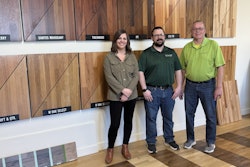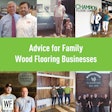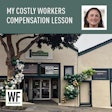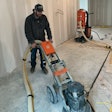
 Is your budget for product purchases out of control?
Is your budget for product purchases out of control?
Budgets for buying are an interesting facet of retail. They delve into the heart of a retail business, and they also open up a lot of arteries. We have to look at them in a very serious and unveiling way to keep our retail businesses on the right track.
But many of the retailers I work with struggle immensely with their buying, and their buying budgets can be as much as 90% of their sales. When that's the case, explain to me: Where is the rest of the money coming from to run that business? More often than not I hear, "Barb, my credit card is paying my wage." I get riled up when I hear that. And when it isn't being paid with credit cards, it's a family's inheritance paying for these mistakes. Of course, buying too little for your store can be just as dangerous for your business.
In this column, I'm going to talk about successful strategies for buying, including what you should buy and how much of it, and share ideas that will hopefully help keep credit cards and the family inheritance far away from your wage.
Know your numbers
Before we set a buying budget, we need to look at sales reports (see my previous column for why these are so important). I always start by asking retailers for the following sales reports:
Sales by Category: What's your best-selling category? Many retailers don't categorize their products—and they've got a big problem right there, because understanding your categories is understanding your business.
Sales by Supplier: Are you carrying a company's product that is not doing well and buying it again? If so, why?
Sales by Item: This should be arranged from best-selling to worst to give you a clear picture.
Sales by Margin: Why sell a product that is delivering the lowest margins to you?
Inventory: To continue figuring out what works and what doesn't, we need to understand your inventory's flow.
Keep an eye on trends
The whole idea behind looking at numbers is to keep your business fresh. Equally critical in keeping your business fresh is following industry trends, and that means listening to your customers. If you're not listening to what people are telling you about why they're not buying from your store, you're going to get left behind.
You also need to make sure you're not ignoring what your competition is doing. A marketplace for a retailer with a specific product (like hardwood flooring) can be between 20–30 miles. That's a big radius. You've got to know who's there and what they're selling! If you bury your head in the sand and say, "Well, I don't care what other people are doing," that's not going to help your business.
Understand why the customer didn't buy
The previous tips tie into this critical question: Why did people walk into your store and walk out without buying anything? They didn't come in just to stretch their legs. Did you not have the product or brand that they wanted, or did the salesperson make a difference? You need to know. And only the person interacting directly with the customer would know that. Let's hope we hear that the customer left empty-handed because you didn't have the right product. As frustrating as it is for a retailer to hear that, it's also music to her ears, because that's valuable information.
RELATED: How to Ask Your Wood Floor Consumer the Right Questions
Use the 'Open to Thrive' budgeting system
The system that I share for developing a buying budget is called the Open to Thrive (OTT) system, and it follows this formula:
55% of sales for product purchases
40% of sales for operating costs
5% of sales for profit
There's a caveat: I'm assuming that if you are paying a $1 for a product, you are selling it for a minimum of $2.25. You may have margins far slimmer than that. That's fine, but at that point you need a business coach who can interpret what that means regarding how you operate your business.
Knowing this, let's look at an example.
Say we make $500,000 in annual sales. Based on the OTT system, that means your annual buying cannot be higher than $275,000. Operating cost would be $200,000, and your profit would then be $25,000.
You're going to say to me: "Barb, that's a lot of work just to get a profit of $25,000." But your operating costs should include your wages, right? It should also include your car expenses, etc. If you're still unhappy with this, then how about we increase sales? Instead of going backward, let's aim even higher.
Put it all together
With buying, you always have to be careful. When you're buying something for your store, you must understand what's selling and what's selling well and what your average sale is. That process can be eye-opening to a lot of retailers. Every retailer's buying budget is going to be different from the next, but if you know your numbers, stay on top of trends and follow the OTT system, you'll get a firm grasp of your budget and better serve your customers and your business.
Do your reports make sense?Over the years, I've coached dozens of bookkeepers and have found some of them don't end up liking me very much—because oftentimes I end up telling them that the way they churn out their reports is useless. These reports can be overly technical, and the retailer doesn't understand what they mean. So a long time ago, I made it clear: We need to make these reports line up with what the retailer understands regarding the language and the way they are laid out. If the retailer can't easily understand them, they have to change. |

































